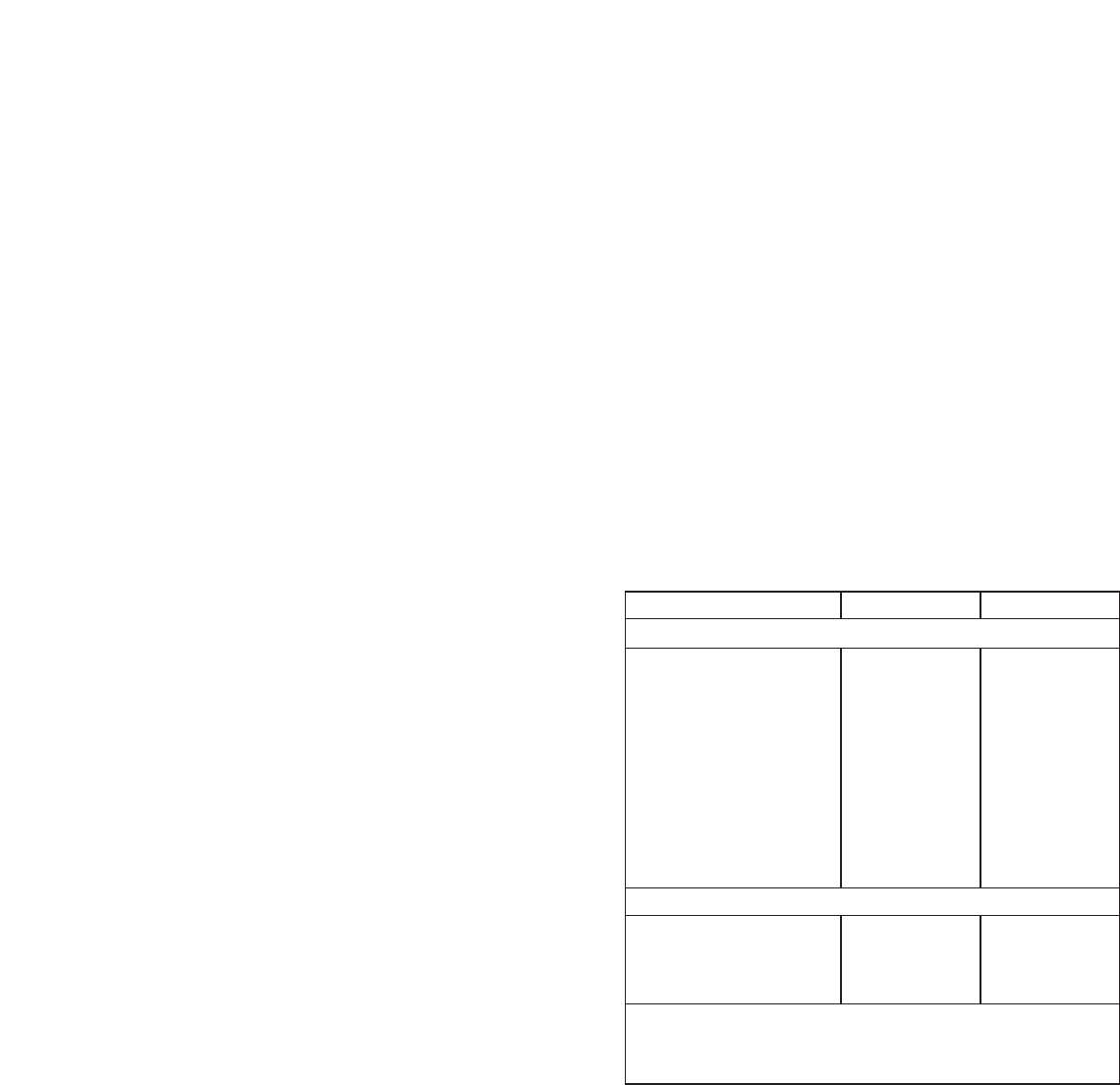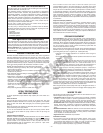
SPECIMEN
LABEL
– 3 –
• Do not apply to agricultural irrigation water or on agricultural irrigation
ditchbanks and canals.
• Do not apply to agricultural drainage water or on agricultural ditchbanks.
T
urfgrass tolerance:
• The turfgrass tolerance to this product may vary and temporary turfgrass
yellowing may occur on certain varieties of hybrid bermudagrass. Adverse
environmental conditions may reduce the selectivity on the turfgrass. Do
not apply this product to stressed turf.
•
Certain spray tank additives (adjuvants, wetting agents, surfactants), liquid
fertilizers, and tank mixtures containing emulsifiable concentrates may
reduce the selectivity on the turfgrass. Do not use adjuvants and spray
additive tank-mix combinations, unless your experience indicates that the
tank mixture will not result in turf injury.
Prohibitions:
• Do not apply this product to bentgrass greens or tees, carpetgrass,
d
ichondra, legumes, and lawns where desirable clovers are present.
• Do not broadcast apply this product when temperatures are above 90°F,
some injury may be expected with spot treatments when air temperatures
exceed 90°F.
• To avoid turf injury, use only on turfgrass that is reasonably free of stress
f
rom diseases, insects, excess heat or cold, drought or excess rainfall/
irrigation, shaded areas, low soil pH, nematodes, improper mowing or
improper applications of fertilizer and pesticides. Injury can occur if this
product is applied under any of these or other stress conditions.Under any
of these stress conditions, any turf damage caused by the use of this
p
roduct is beyond the control of PBI/Gordon Corporation and all risk is
assumed b
y the buyer and/or user.
•
Not for sale or use in the States of California or New York unless
accompanied by supplemental labeling.
SPRAY DRIFT MANAGEMENT
Do not apply under circumstances where possible drift to unprotected per-
sons or to food, forage or other plantings that might be damaged or crops
thereof rendered unfit for sale, use or consumption can occur.
Use the largest droplet size consistent with acceptable efficacy. Formation
of very small droplets may be minimized by appropriate nozzle selection, by
orienting nozzles away from the air stream as much as possible and by
avoiding excessive spray boom pressure. For ground boom and aerial
applications, use medium or coarser spray nozzles according to ASAE 572
definition for standard nozzles or a volume mean diameter (VMD) of
300 microns or greater for spinning atomizer nozzles.
Mak
e aer
ial or g
round applications when the wind v
elocity favors
on-target product deposition. Apply only when the wind speed is less than
or equal to 10 mph. For all non-aerial applications, wind speed must be
measured adjacent to the application site on the upwind side, immediately
prior to application.
Do not make aerial or ground applications into areas of temperature
inversions.Inversions are characterized by stable air and increasing temper-
atures with increasing distance above the ground. Mist or fog may indicate
the presence of an inversion in humid areas. Where permissible by local
regulations
, the applicator ma
y detect the presence of an inversion by
producing smoke and observing a smoke layer near the ground surface.
Lo
w humidity and high temper
atures increase the e
v
aporation rate of spray
droplets and therefore the likelihood of increased spray drift. Avoid spraying
dur
ing conditions of lo
w humidity and/or high temper
atures.
All aerial and ground application equipment must be properly maintained
and calibrated using appropriate carriers.
F
or g
round boom applications
, apply with nozzle height no more than
4 feet above the ground or crop canopy.
APPLICATION SCHEDULES
Apply this product to broadleaf w
eeds that are y
oung and activ
ely growing
for the best results. Spring and fall treatments under adequate soil moisture
conditions are preferred to the summer treatments. Generally, summer
broadcast applications to older
, drought stressed w
eeds are less eff
ectiv
e
.
Fall applications provide improved control for emerged winter annuals and
perennials such as henbit, chickweed, clover and ground ivy.
Sequential broadcast applications or f
ollo
w-up applications as spot treat-
ments at a 2-6 week interval are recommended for more mature weeds, for
dense infestations, and for adverse environmental conditions.
Spot treatments during the summer may be appropriate for sparse infesta-
tions, or as a follow-up treatment, or any time broadleaf weeds are actively
growing.
Extremes in en
vironmental conditions e
.g.
temper
ature and moisture
, soil
conditions, and cultural practices may affect the activity of this product. Under
warm moist conditions, herbicide symptoms may be accelerated.While under
very dry conditions, the expression of herbicide symptoms is delayed, and
weeds hardened off by drought are less susceptible to this product.
For newly seeded areas:
Delay application of this product to grass seedlings until after the second
mowing.
F
or newly sodded, sprigged, or plugged areas:
The application of this product to newly sodded, sprigged, or plugged
grasses should be delayed until 3 to 4 weeks after the sodding, sprigging,
or plugging operations.
Reseeding interval:
Treated areas may be reseeded 3 weeks after application.
HOW MUCH TO USE
USE RATES AND SPRAY VOLUMES
Generally, the lower application rates within the specified range will provide
satisfactory control of sensitive weed species. The higher application rates
within the specified range will be required for dense infestations of perennial
w
eeds, for adverse/extreme environmental conditions, or for weeds
hardened off or more mature.
T
he maximum application rate to turf is 0.9 pounds 2,4-D acid equivalent
per acre per application per site. The maximum number of broadcast
applications per treatment site is 2 per year.
The maximum seasonal rate of sulfentrazone contained in this product with
two (2) broadcast applications to turfgrass is 0.074 pounds of sulfentrazone
per acre per season. The retreatment interval for sequential broadcast
applications of this product on turfgrass is two (2) to six (6) weeks
d
epending upon the growth stages of the target weeds.
TABLE 1. USE RATES FOR SOD FARMS,
ORNAMENTAL LAWNS AND TURFGRASS.
COOL-SEASON TURF
Kentuck
y bluegrass, annual
bluegrass, annual ryegrass
perennial ryegrass, tall fescue,
red or fine leaf fescues,
creeping bentgrass and
colonial bentgrass (excluding
golf greens and tees).
Mixtures of cool-season species
in non-cropland areas
established for roadside
vegetation management or for
low maintenance.(Kentucky
bluegrass, tall fescue, smooth
bromegrass and orchardgrass)
Hybrid bermudagrass, common
bermudagrass, zoysiagrass,
bahiagrass and buffalograss
2
3
⁄4-3
1
⁄4 Pints/Acre
(1.0 to 1.2 fl.oz./
1,000 sq.
ft.)
20-220
Gallons/Acre
(0.5 to 5.0 Gallons/
1,000 sq.ft.)
3
1
⁄4-4 Pints/Acre
(1.2 to 1.5 fl.oz./
1,000 sq.ft.)
20-220
Gallons/Acre
(0.5 to 5.0 Gallons/
1,000 sq.ft.)
R
ATE SPRAY VOLUME
WARM-SEASON TURF
Do not apply this product to warm-season turfgrass during spring green-up or in
the fall during the transition period between active growth and dormancy.
Dormant turf: This product may be applied to fully dormant bermudagrass, fully
dormant zoysiagrass, and fully dormant bahiagrass.
SPO
T
TREATMENT
WITH HAND OPERA
TED SPRA
YERS (INCLUDING
B
A
CKPACK SPRAYERS, COMPRESSION SPRAYERS,
AND KNAPSA
CK SPRA
YERS)
• Apply any time the emerged broadleaf weeds are actively growing.
• Calibration and proper application are essential when using this product.
• Uniform applications are essential when using this product. Over applica-
tion or rates above those specified on this label including excessive over-
laps of this product can cause turf injury.
•
Hand-held techniques: Wands fitted with flat fan nozzle tips may be used
with the appropriate technique. Flat fan nozzles should not be waved in a
bac
k-and-f
or
th motion, or in a side-to-side motion, or in a swinging arm
motion. Instead, the nozzle should be held stationary at the proper height.
Side-to-side motions result in uneven coverage.
• Follow-up applications as spot treatments at a 2-6 week interval are
recommended for more mature weeds, for dense infestations, and for
adverse environmental conditions.
•
For cool-season turfgrass: Mix 1.2-1.5 fl. oz. of this product per one
(1.0) gallon of water for treatment of approximately 1,000 sq.ft of turfgrass.
Apply any time the emerged broadleaf weeds are susceptible.







